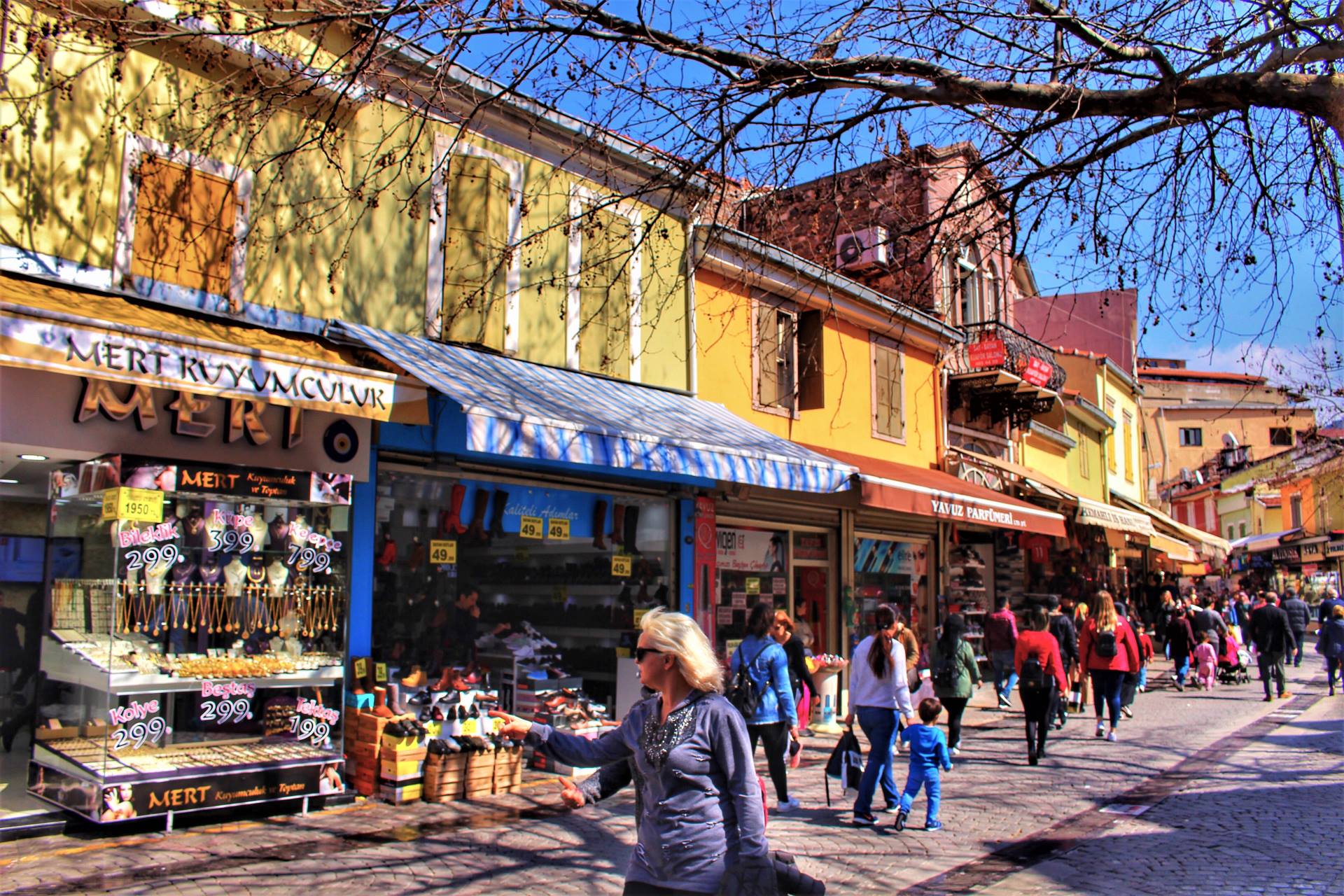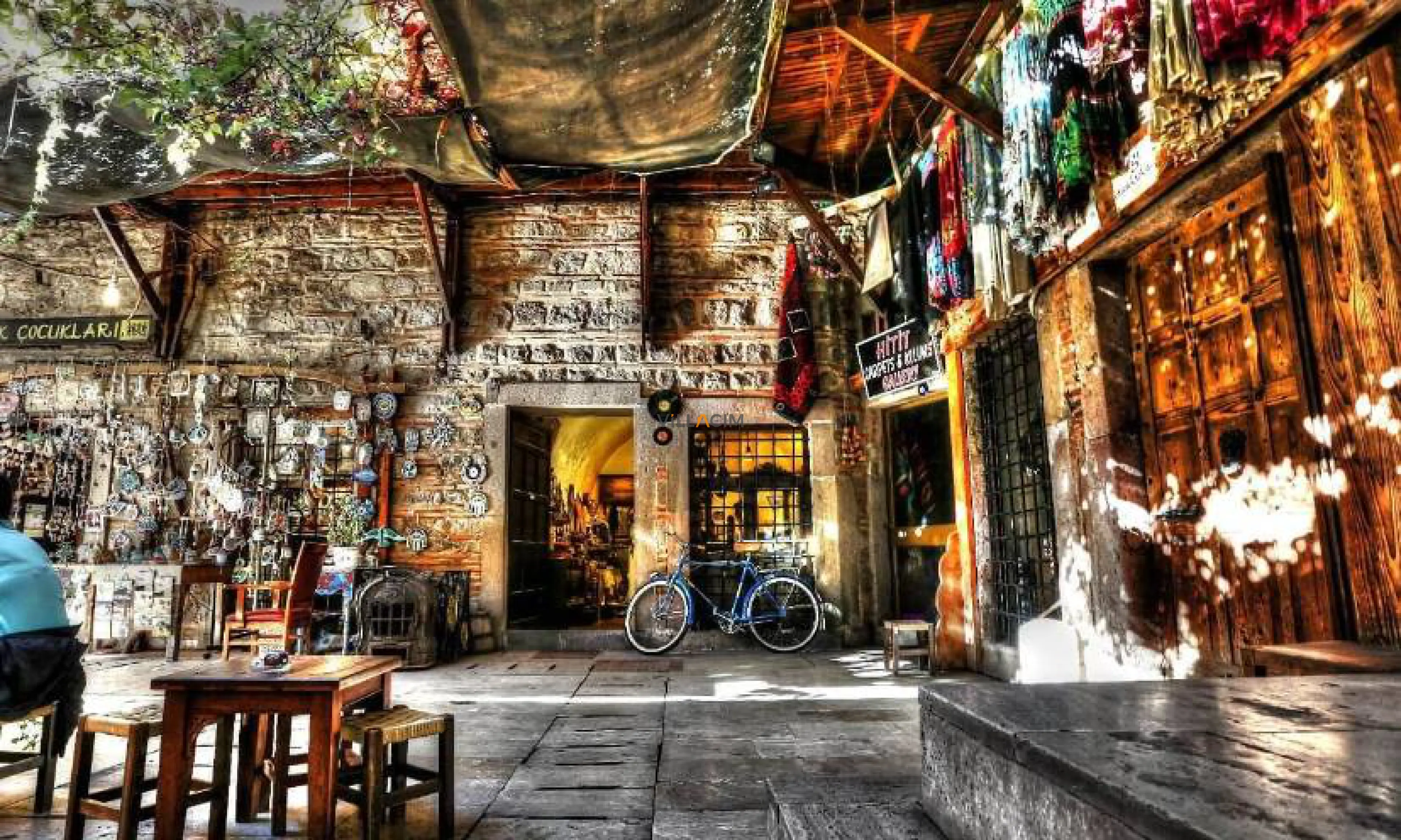Are you ready to get lost in the narrow streets of Izmir's heart, where centuries-old stories are whispered? If your answer is yes, then we invite you not just to a shopping center, but to a living history book: the Kemeraltı Bazaar. This is a magical labyrinth where you encounter a different surprise at every corner, where time seems to flow a little slower, and which holds the most authentic spirit of the Aegean. In this article, we will offer you an experience far beyond a list of things to do in the Historic Kemeraltı Bazaar; we will tell you how to capture its soul, which artisan's door to knock on, and which street will lead you to which fairy tale.
Kemeraltı is one of the world's oldest and largest open-air bazaars, sprawling over a vast area from Mezarlıkbaşı to Konak Square. This unique place, which has been the city's commercial center since the Hellenistic period, continues to preserve its vibrant texture today. Come, let's embark on an unforgettable journey through this historical fabric and discover together what Kemeraltı has to offer.
Feel the Authentic and Vibrant Atmosphere of the Bazaar
The moment you step into Kemeraltı, you immediately feel that unique atmosphere that disconnects you from the modern world and transports you to another realm. This is not just a place of shops; it is a social mosaic where a 2,400-year-old history, different cultures, and countless life experiences are intertwined. Even the famous curve of the bazaar's main artery, Anafartalar Street, tells you a story; this curve was formed because it followed the edge of the inner harbor that existed centuries ago and was eventually filled in. So, the paths you walk on today were once the shores where boats sailed. This geographical origin is also the key to why the bazaar has such a diverse and rich cultural structure. Port cities have historically been meeting points for merchants, travelers, and artisans from different geographies. This meeting has been woven into the fabric of Kemeraltı, giving birth to a culture of coexistence where three major religions live in harmony, with its mosques, churches, and synagogues concentrated especially around Havra Street.
To best experience this atmosphere, all you have to do is surrender to the rhythm of the crowd. Breathe in the scents of freshly ground coffee and spices that greet you as you wander through the narrow streets. Listen to the unique symphony created by the sounds of coppersmiths' hammers, the friendly banter of shopkeepers, and the flapping of pigeons' wings. Be sure to make your way to Kızlarağası Hanı or Abacıoğlu Hanı. Sitting in the cool courtyards of these historic caravanserais and sipping a cup of frothy Turkish coffee is like pausing within the motion, breathing in the past on the edge of commerce. This area, which was included in the UNESCO World Heritage Tentative List in April 2020 under the title The Historical Port City of Izmir, is not just a bazaar but a universal heritage that needs to be protected. The inns and mosques of Kemeraltı are just a part of the city's rich history. To discover more, you can check out our article on the historical and tourist places of Izmir.

Look for Products of Telkari Silverwork, a Trabzon Specialty
As you wander through the bustling streets of Kemeraltı, you will encounter an art that will suddenly slow you down and leave you in awe: Telkari. This elegant craft, where thin silver wires are patiently twisted and joined together like lace, is one of Anatolia's most precious heritages. But why should you look for the finest examples of this special art, whose roots lie in cities like Trabzon and Mardin, in the heart of Izmir? Because Kemeraltı, as it has been throughout history, continues to be a center of attraction for master artisans from all over the country. While traditional arts struggle to survive in their native lands, large and touristic centers like Kemeraltı offer them a new breath of life, a new market.
One of these masters is Remziye Erdem, a Kazaziye-Telkari artist who keeps this ancient art alive in her small workshop in Kemeraltı. Thanks to such valuable artisans, who hold the title of artist from the Ministry of Culture and Tourism, the delicate spirit of telkari is passed down from generation to generation. As you walk through the Jewelers' section of the bazaar, you can find small workshops where you have the chance to watch this art being performed live. An elegant pair of earrings, a finely crafted necklace, or a stunning brooch... Each piece you find here is not just a piece of jewelry, but a work of art into which a master has poured hours of patience and soul. A telkari product you buy from here will not only be a beautiful souvenir but also a small contribution to the survival of this valuable cultural heritage.

Examine the Handcrafted Products in the Coppersmiths' Street
If you follow the sound map of Kemeraltı, the rhythmic hammer blows will surely lead you to Bakırcılar Sokağı (Coppersmiths' Street). This is one of the most authentic and loudest corners of the bazaar, where fire and human labor give life to copper. In a world dominated by mass production today, here you witness each product being shaped with hammer strokes, patience, and skill. The shops on this street are not just points of sale, but also workshops and living museums.
One of the masters keeping this tradition alive is İnan Yıldırım. Continuing his father's profession for 27 years, Yıldırım is a master who not only makes coffee pots and pans but also the finials on top of symbolic structures like the Izmir Clock Tower and the Historical Elevator. The hand-forged copper products from his hands are exported all over the world, from Dubai to Qatar, which is the best proof of how a local craft can have universal value. Another master, Hasan Var, combines the disappearing art of coppersmithing with his experience in jewelry making to create unique copper jewelry. This is an indicator of how traditional arts can be innovative and creative to survive. As consumer demands change, these masters have started selling not just kitchenware, but art and stories. A copper coffee pot from their hands doesn't just brew coffee; it tells you the story of a master, the resistance of a tradition, and the warmth of manual labor. Artisans like the coppersmiths here keep Anatolia's rich heritage alive. To learn more about other (https://www.yerelrehber.com/en/explore/things-to-do/hafiz-traditional-arts), read our article.

Don't Let Your Kemeraltı Adventure End: Nearby Beauties
When you leave the magical streets of Kemeraltı, Izmir has much more to offer. Here are a few suggestions to continue your adventure:
Konak Square and Clock Tower: Right at the exit of the bazaar, the elegant Clock Tower, the symbol of Izmir, will greet you. You can feed the pigeons in the square and take wonderful photos in front of this iconic structure.
Agora Open Air Museum: This ancient Roman marketplace, just a few minutes' walk away, will instantly take you back 2000 years. After the bustling crowd of the bazaar, wandering among the calm and magnificent ruins of the Agora is a unique experience.
Historical Elevator: If you want to see Izmir from a bird's-eye view, you must visit the Historical Elevator. Built in 1907, this structure not only transports you between two neighborhoods but also mesmerizes you with its panoramic view of the bay.
Frequently Asked Questions (FAQ)
1. How to get to the Historic Kemeraltı Bazaar? Kemeraltı is located in Konak, the heart of Izmir, so transportation is very easy.
Metro: This is the most practical method. You can get off at Konak or Çankaya stations and reach the bazaar in a few minutes.
Bus: There are numerous bus lines from almost every part of the city that pass through the Konak, Hisarönü, or Kestelli stops.
Ferry: You can take a pleasant sea journey by taking the ferries from Karşıyaka or Bostanlı to Konak Pier and then walk to the bazaar.
Tram: The Konak Tram, which follows the coastline, is also a great alternative for reaching the bazaar.
2. What are the opening and closing hours of Kemeraltı Bazaar? Kemeraltı is not a shopping mall with a single management; it consists of thousands of independent shops. Therefore, although there are no fixed opening and closing times, most shops generally open around 10:00 AM and close around 8:00 PM. This time may be slightly extended on Saturdays, while some shops may be closed on Sundays. Additionally, the fact that the inner roads of the bazaar are closed to motor vehicle traffic between 10:30 AM and 5:30 PM offers a more comfortable walking experience for pedestrians.
3. Can you bargain in Kemeraltı? Yes, bargaining is part of the culture in Kemeraltı, especially when shopping from traditional shopkeepers and artisans. While prices are fixed in major brand stores, don't hesitate to engage in a friendly bargain with the shopkeepers, especially when buying handmade products (copper, silver, leather, etc.). This is not just about lowering the price, but also a way to chat with the shopkeepers who come from the Ahi tradition and make the shopping experience more enjoyable.
Bibliography
For more academic information on the historical importance of Kemeraltı, you can visit the UNESCO tentative heritage list page (https://whc.unesco.org/en/tentativelists/6475/).


 English
English Türkçe
Türkçe